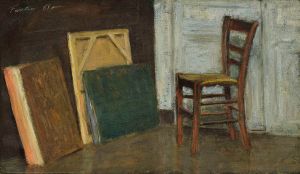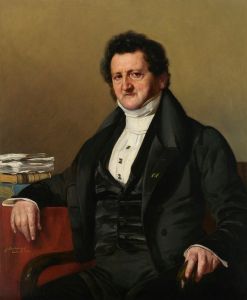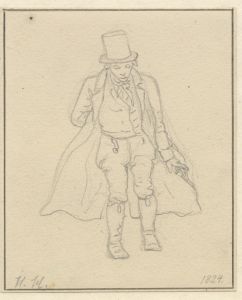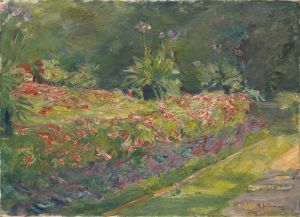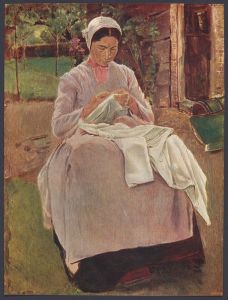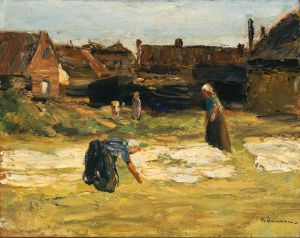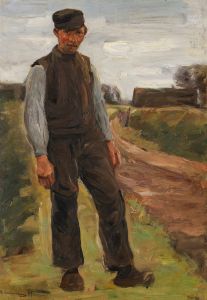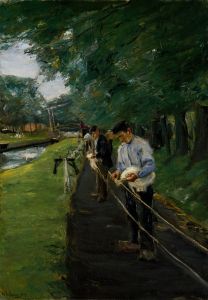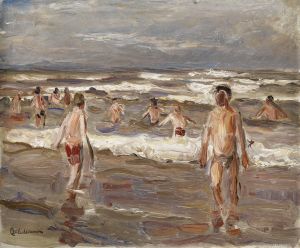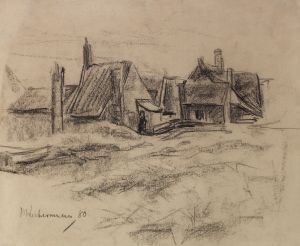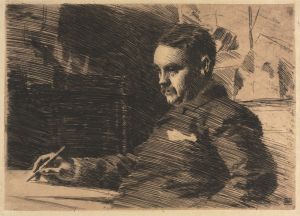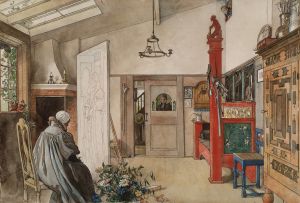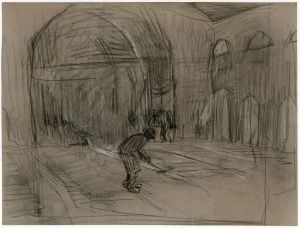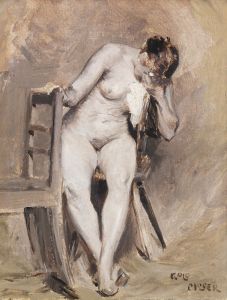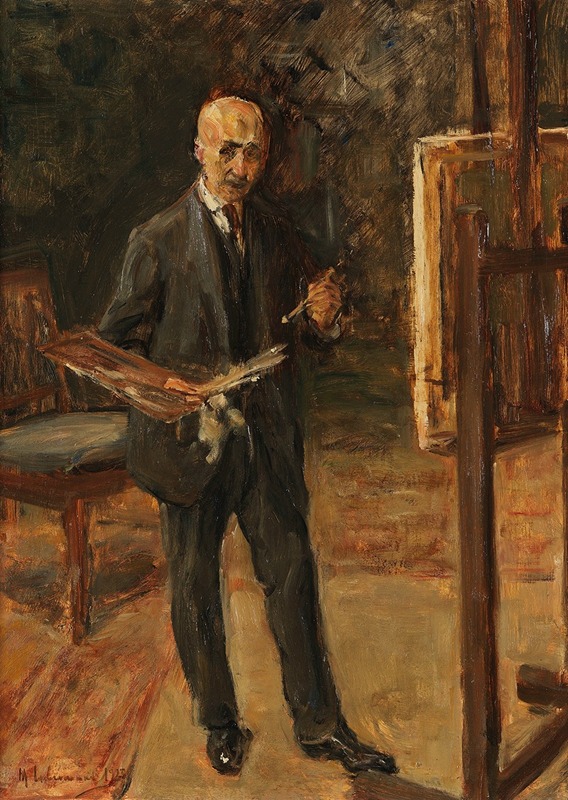
Selbstbildnis im Anzug vor der Staffelei, Ganzfigur
A hand-painted replica of Max Liebermann’s masterpiece Selbstbildnis im Anzug vor der Staffelei, Ganzfigur, meticulously crafted by professional artists to capture the true essence of the original. Each piece is created with museum-quality canvas and rare mineral pigments, carefully painted by experienced artists with delicate brushstrokes and rich, layered colors to perfectly recreate the texture of the original artwork. Unlike machine-printed reproductions, this hand-painted version brings the painting to life, infused with the artist’s emotions and skill in every stroke. Whether for personal collection or home decoration, it instantly elevates the artistic atmosphere of any space.
"Selbstbildnis im Anzug vor der Staffelei, Ganzfigur" (Self-Portrait in a Suit in Front of the Easel, Full Figure) is a notable painting by the German artist Max Liebermann. Created in 1916, this work is a significant example of Liebermann's mature style and his contribution to the German Impressionist movement.
Max Liebermann (1847-1935) was one of the leading figures in German art during the late 19th and early 20th centuries. He was a prominent member of the Berlin Secession, an art movement that sought to break away from the conservative academic standards of the time. Liebermann's work is characterized by its loose brushwork, vibrant use of color, and focus on everyday scenes and portraits.
In "Selbstbildnis im Anzug vor der Staffelei, Ganzfigur," Liebermann presents himself standing in front of an easel, dressed in a formal suit. This self-portrait is notable for its full-figure composition, which is somewhat unusual in the genre of self-portraiture, where artists often depict themselves in a bust or half-length format. The choice to portray himself in a suit rather than an artist's smock may reflect Liebermann's status and self-perception as a professional and respected figure in the art world.
The painting showcases Liebermann's skillful use of light and shadow, as well as his ability to capture the texture and detail of his clothing and surroundings. The background is relatively simple, focusing attention on the artist himself and his tools of the trade. The easel and canvas in the background serve as a reminder of Liebermann's identity and vocation as a painter.
Liebermann's self-portraits are an important part of his oeuvre, offering insight into his self-image and artistic development over time. This particular work, created during World War I, may also reflect the artist's thoughts and feelings during a tumultuous period in history. However, the painting itself remains focused on the individual and his craft, rather than overtly addressing the broader social and political context of the time.
"Selbstbildnis im Anzug vor der Staffelei, Ganzfigur" is housed in the collection of the Nationalgalerie in Berlin, Germany. It continues to be studied and admired for its technical excellence and the personal insight it provides into one of Germany's most important artists. Liebermann's legacy as a pioneer of modern German art and his influence on subsequent generations of artists remain significant, and this self-portrait is a testament to his enduring impact on the art world.





